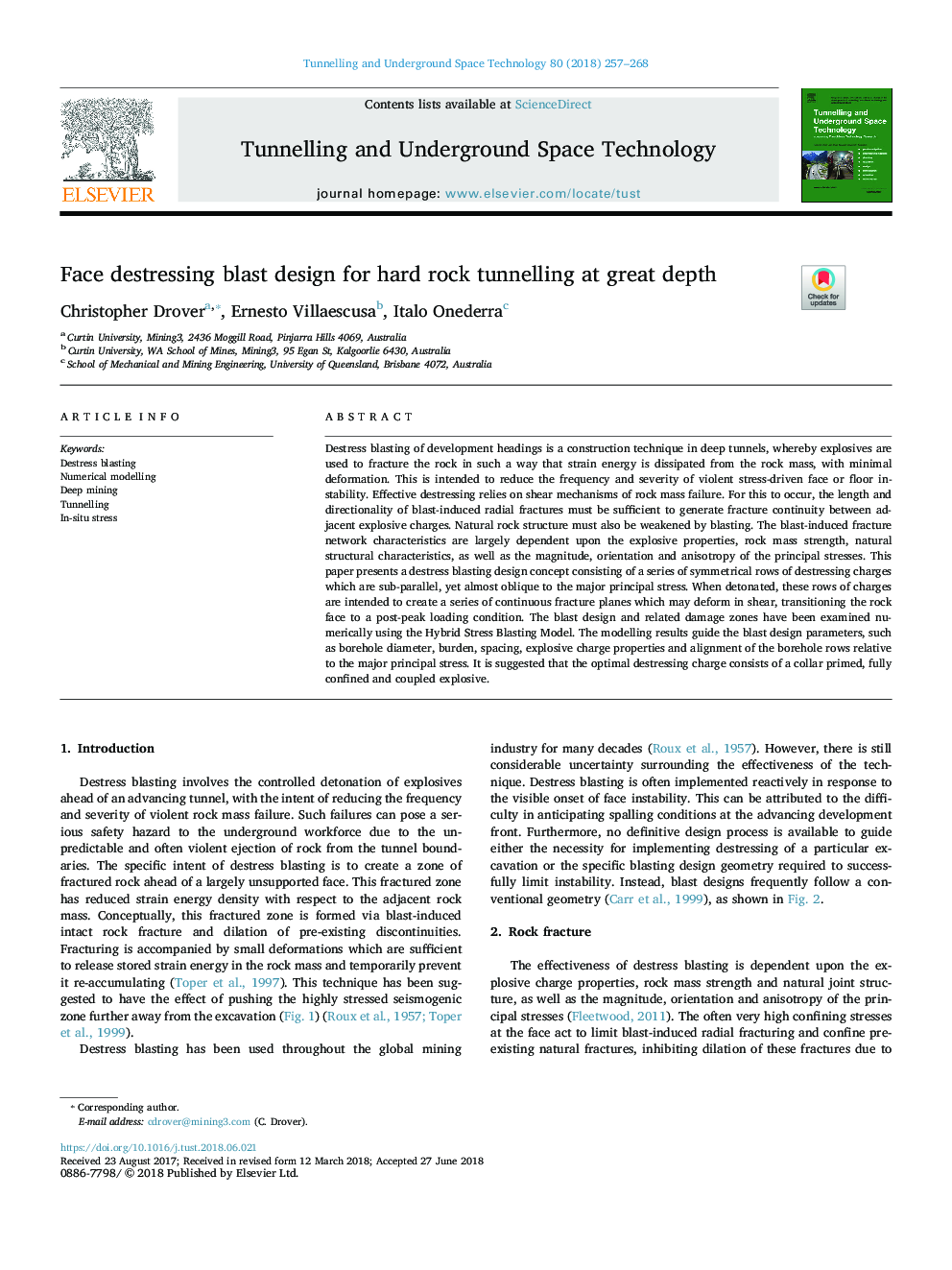| Article ID | Journal | Published Year | Pages | File Type |
|---|---|---|---|---|
| 6782344 | Tunnelling and Underground Space Technology | 2018 | 12 Pages |
Abstract
Destress blasting of development headings is a construction technique in deep tunnels, whereby explosives are used to fracture the rock in such a way that strain energy is dissipated from the rock mass, with minimal deformation. This is intended to reduce the frequency and severity of violent stress-driven face or floor instability. Effective destressing relies on shear mechanisms of rock mass failure. For this to occur, the length and directionality of blast-induced radial fractures must be sufficient to generate fracture continuity between adjacent explosive charges. Natural rock structure must also be weakened by blasting. The blast-induced fracture network characteristics are largely dependent upon the explosive properties, rock mass strength, natural structural characteristics, as well as the magnitude, orientation and anisotropy of the principal stresses. This paper presents a destress blasting design concept consisting of a series of symmetrical rows of destressing charges which are sub-parallel, yet almost oblique to the major principal stress. When detonated, these rows of charges are intended to create a series of continuous fracture planes which may deform in shear, transitioning the rock face to a post-peak loading condition. The blast design and related damage zones have been examined numerically using the Hybrid Stress Blasting Model. The modelling results guide the blast design parameters, such as borehole diameter, burden, spacing, explosive charge properties and alignment of the borehole rows relative to the major principal stress. It is suggested that the optimal destressing charge consists of a collar primed, fully confined and coupled explosive.
Related Topics
Physical Sciences and Engineering
Earth and Planetary Sciences
Geotechnical Engineering and Engineering Geology
Authors
Christopher Drover, Ernesto Villaescusa, Italo Onederra,
